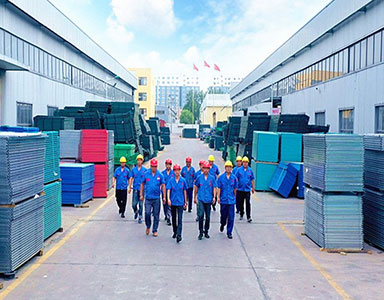The Versatility and Applications of Perforated Copper Foil
Perforated copper foil is an innovative material that has gained popularity across various industries due to its unique properties and versatile applications. This specialized form of copper foil is characterized by a series of holes or perforations, which can vary in size, shape, and distribution. These perforations not only enhance the material's aesthetic appeal but also significantly improve its functional capabilities.
One of the primary advantages of perforated copper foil is its lightweight nature combined with sturdiness. Copper, as a metal, is known for its excellent electrical conductivity, thermal conductivity, and resistance to corrosion. When transformed into a perforated foil, these properties are preserved while achieving a reduction in weight, making it an ideal choice for applications where both strength and lightweight characteristics are essential.
Applications in Electronics
In the electronics industry, perforated copper foil plays a crucial role in various applications. It is used as an efficient conductive layer in printed circuit boards (PCBs) where weight reduction is key. The perforations permit better heat dissipation, which is vital for the longevity and performance of electronic devices. Moreover, these foils can be tailored for specific electronic uses, such as antennas where the design may require specific geometries for optimal performance.
The automotive sector also benefits from the use of perforated copper foil. In electric vehicles (EVs), heat management is critical as batteries generate significant amounts of heat during operation. Perforated copper foils are employed in battery cooling systems due to their effective thermal transfer properties and ability to spread heat quickly. Additionally, the lightweight nature of these foils contributes to the overall weight savings of the vehicle, which is essential for improving efficiency and range.
Architectural and Artistic Uses
perforated copper foil

Beyond the technical fields, perforated copper foil has found its niche in architecture and art. It is frequently used to create stunning visual effects in building facades or interior design elements. The play of light and shadow created by the perforations allows architects and designers to explore new aesthetic dimensions. Additionally, because copper develops a beautiful patina over time, the visual appeal of these materials can enhance with age, making them an attractive option for long-term structural works.
Artists have embraced perforated copper foil as a medium for sculpture and installation art. The ability to manipulate the foil into complex shapes while maintaining its structural integrity allows for creative freedom. The interplay of light and the organic qualities of copper can result in mesmerizing art pieces that captivate audiences.
Environmental Considerations
One of the compelling features of perforated copper foil is its eco-friendliness. Copper is a recyclable material, and using perforated copper foils contributes to reducing waste in manufacturing processes. The holes reduce the amount of copper needed while maintaining the effectiveness of the product, leading to more sustainable production methods. Furthermore, as the world shifts towards greener technologies, the demand for such materials in sustainable designs and efficient energy solutions will likely increase.
Future Trends
Looking ahead, the market for perforated copper foil is projected to expand further due to advances in manufacturing techniques and growing demands in various sectors. Innovations in perforation technology may allow for even more precise customization, catering to specific application requirements. Furthermore, as industries embrace Industry 4.0 practices, the integration of smart materials and IoT (Internet of Things) capabilities will redefine how perforated copper foils are used in electronic and automotive applications.
In conclusion, perforated copper foil stands out as a multifunctional material. Its combination of lightweight properties, excellent electrical and thermal conductivity, aesthetic versatility, and sustainability makes it an attractive choice in various fields. As technology evolves and industries continue to seek innovative solutions, perforated copper foil is likely to play an increasingly significant role in shaping the future of both technical and creative applications. Whether in electronics, automotive design, architecture, or art, its potential is vast and promising.
-
Why Galvanized Trench Cover Steel Grating Resists Corrosion
NewsJul.10,2025
-
The Versatility and Strength of Stainless Expanded Metal Mesh
NewsJul.10,2025
-
Load Calculations in Steel Grating Platforms
NewsJul.10,2025
-
Keeping Pets and Kids Safe with Chicken Wire Deck Railing
NewsJul.10,2025
-
Hole Diameter and Pitch for Round Perforated Metal Sheets
NewsJul.10,2025
-
Aluminium Diamond Mesh in Modern Architecture
NewsJul.10,2025
Subscribe now!
Stay up to date with the latest on Fry Steeland industry news.

